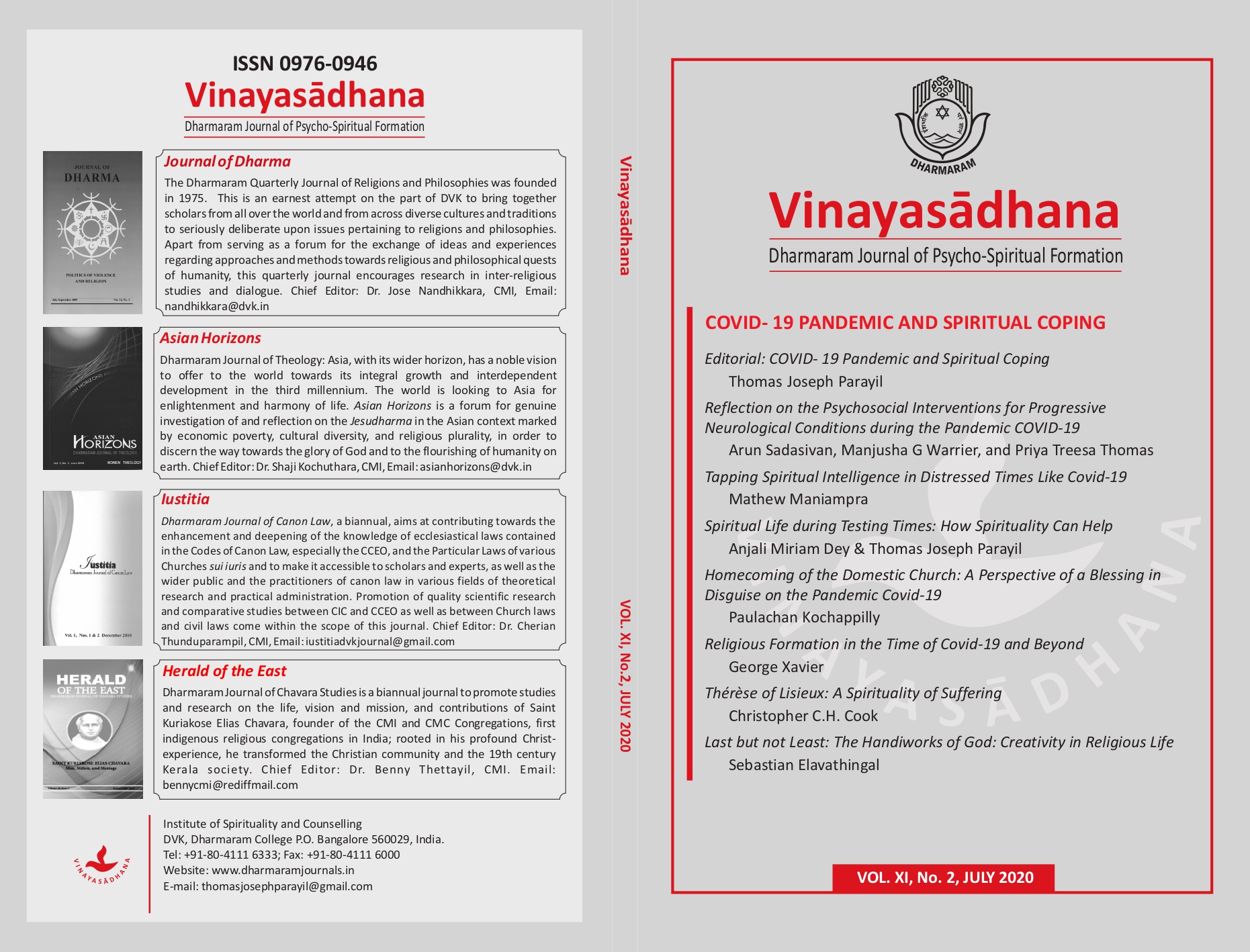The Handiworks of God
Creativity in Religious Life
Abstract
“We are God’s handiwork, created in Christ Jesus to do good works, which God prepared in advance for us to do” (Eph 2:10). St. Paul in his letter to the Ephesians gives a succinct description of the nature of our relationship to God when he says that we are God’s handiwork. The expression ‘handiwork’ means to say something about us as human beings and something about God as the Creator. It implies the creative nature of the relationship God has to the world as well to every human person. It is a dynamic and dialogical relationship. Dialogically, the action of God is to be responded to by human beings in an equally creative manner. The power of divine grace continues to work in us until the plan of God is realized by our participation in creation.
References
Benedict XVI, Pope. (2005). The ‘Via Pulchritudinis’ Privileged Pathway for Evangelization and Dialogue. Retrieved from http://www.vatican.va/roman_curia/pontifical_councils
Benedict XVI, Pope. (31 May 2006). Address to Superiors General, 22 May 2006.L'Osservatore Romano, English Edition.
Benedict XVI. (2006). Encyclical Letter Deus Caritas Est (25 December 2005), 1: AAS 98.
Cenci, R.,& Filippim, E. S. (2017). Attraction and retention of people for religious life in Catholic religious institutions: the importance of institutional features. Cadernos EBAPE.BR, 15(1), 152-16. Retrieved from http://www.scielo.br
Cimperman, Maria, Sister. (2015). The challenges facing religious life today. U.S. Catholic: Faith in Real life. Retrieved from http://www.uscatholic.org/articles
Coomaraswamy, A. K. (1956). The Transformation of Nature in Art. New York: Dover Publications.
Elavathingal, S. (2020). Handiworks of God: Art of Spiritual Life and Religious Formation. Bengaluru: Dharmaram Publications.
Fieser, J. (2009). The Meaning of Life.InJ. Fieser, Great Issues in Philosophy. Oxford University Press: Texas A & M University.
Francis, Pope. (2013). Homily in the Holy Mass for the Beginning of the General Chapter of the Order of Saint Augustine. Retrieved from http://www.vatican.va/content/francesco/en/homilies
Francis, Pope. (2013). Meeting with Seminarians and Novices. Rome. Retrieved from http://www.vatican.va/content/francesco
Francis, Pope. (2015).‘Rejoice’: A letter to consecrated men and women,” in the Year of Consecrated Life. Retrieved from http://www.vatican.va/roman_curia/congregations
Francis, Pope. (2017). The Pope receives participants in the Plenary of the Congregation for the Institutes of Consecrated Life and the Societies of Apostolic Life. In Summary of Bulletin, Holy See Press Office. Retrieved from https://press.vatican.va/content.
Francis, Pope. (2020). Homily of His Holiness Pope Francis, Eucharistic Celebration with the Members of the Institutes of Consecrated Life and the Societies of Apostolic Life, 01 February 2020. Retrieved from http://w2.vatican.va/content/francesco/en/homilies
Francis, Pope. (21 November 2014). Apostolic Letter of His Holiness Pope Francis to All Consecrated People On the Occasion of the Year of Consecrated Life. Retrieved from http://www.vatican.va/content/francesco/en/apost_letters
John Paul II, Pope. (1996). Post-Synodal Apostolic Exhortation Vita Consecrata. Retrieved from http://www.vatican.va/content
John Paul II, Pope. (1996). Vita Consecrata. Retrieved from http://www.vatican.va/content/john-paul-ii/en/apost_exhortations/documents/hf_jp-ii_exh_25031996_vita-consecrata.html
Mittal, T. (2017).To be is to be: Jean-Paul Sartre on existentialism and freedom. Retrieved from https://yourstory.com
Bodhi, B. (2000).The Connected Discourse of the Buddha: A New Translation of the SamyuttaNikaya. Boston: Wisdom Publications. Retrieved from https://www.accesstoinsight.org


